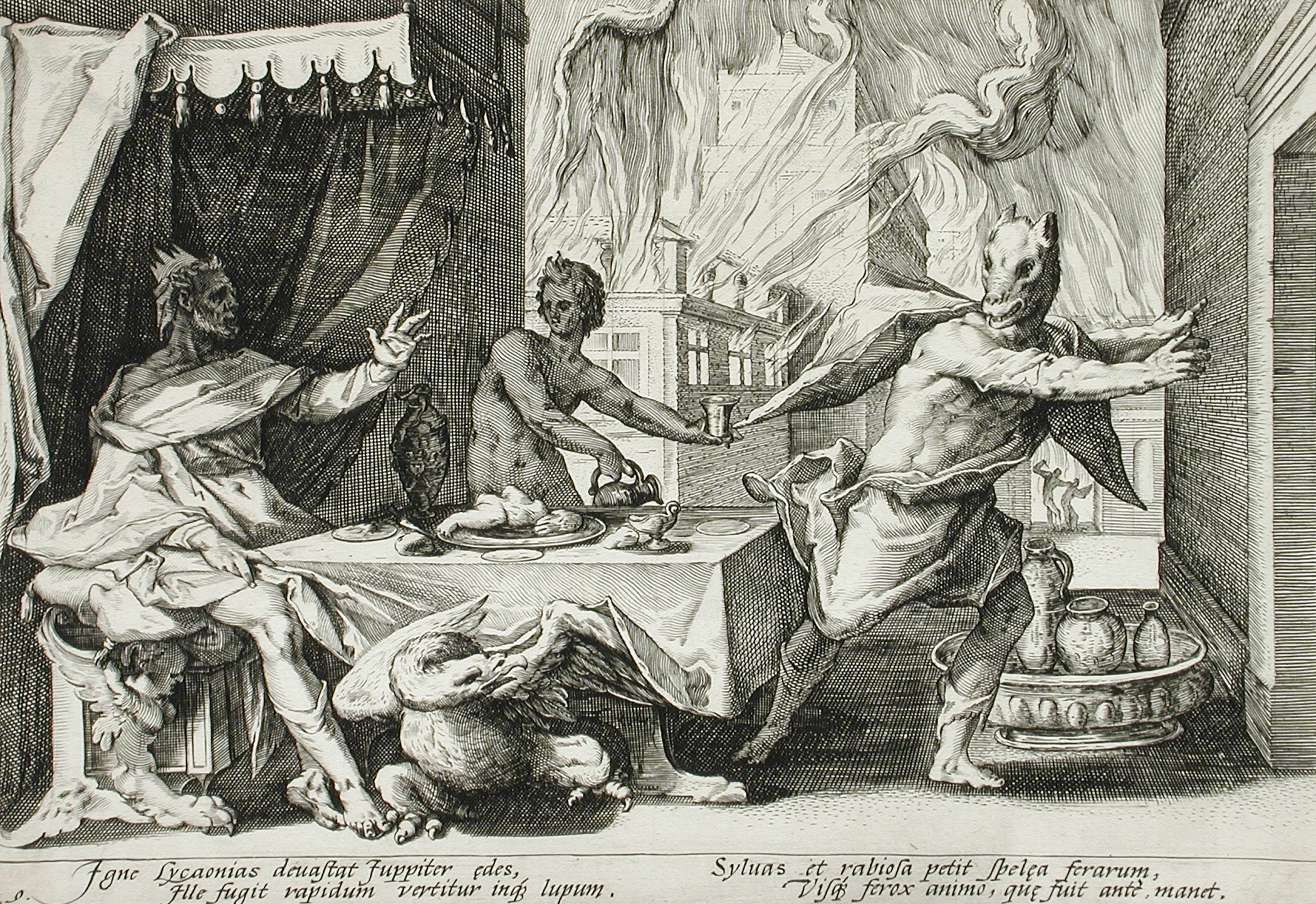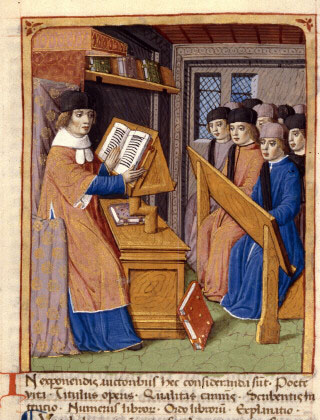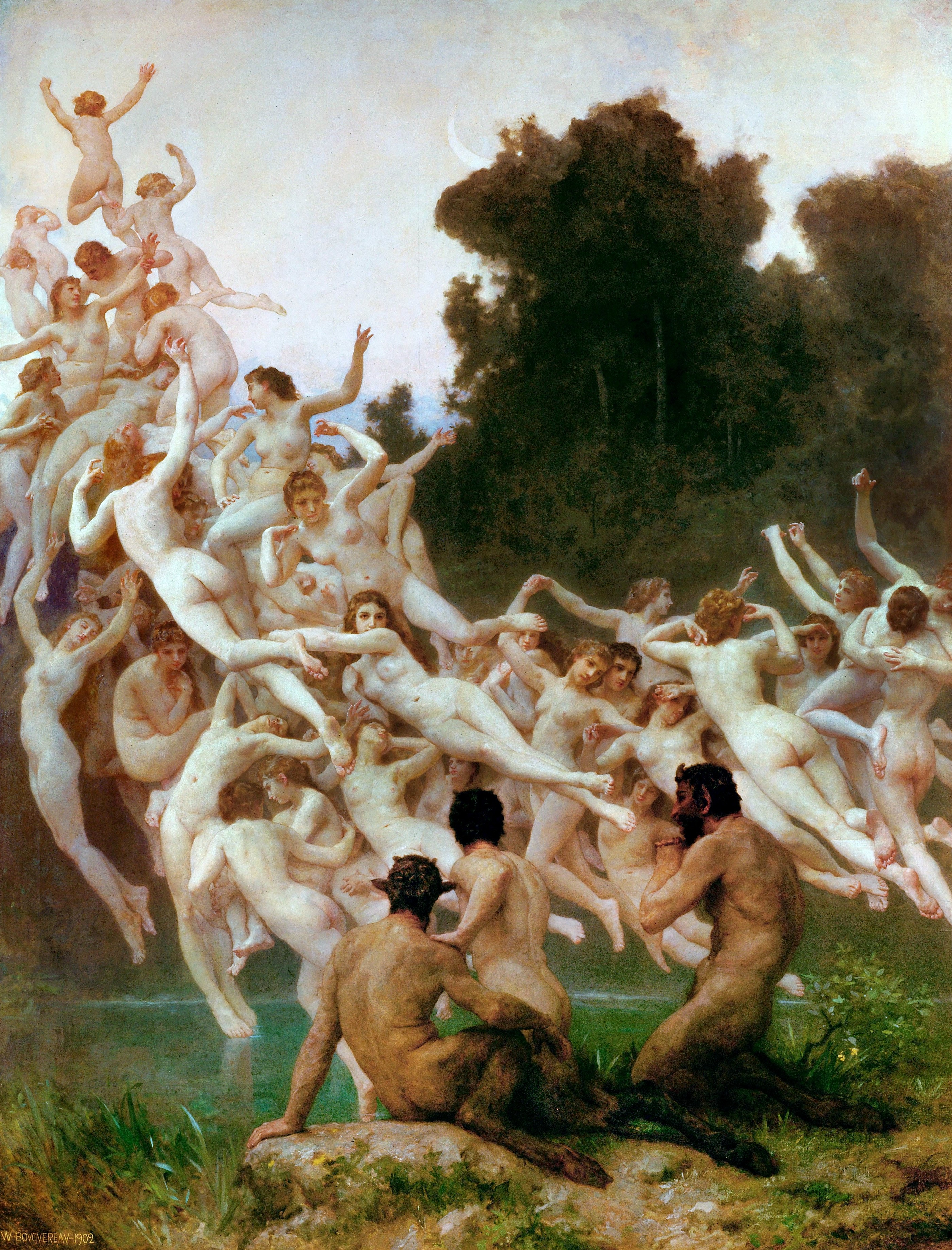|
Nomia (mythology)
In Greek mythology, Nomia (Νομία) was a nymph of Arcadia, where the local people believed the Nomian Mountains to have been named after her. Mythology Nomia was apparently a companion of Callisto, the daughter of Lycaon: Pausanias mentions a painting of the two, with Callisto sitting on a bearskin and her feet lying on Nomia's knees; there is also Pero portrayed next to them. Nomia is also a name for a type of water goddess, many believe that she started off as nothing but a nymph until one day Callisto, decided to trade her love for a god status. Nomia is also a possible name for the Sicilian nymph who loved Daphnis but was abandoned by him and, in revenge, blinded the young man and changed him into a rock. Servius on Virgil's ''Eclogue'' 8. 68 Notes Oreads References * Pausanias Pausanias ( el, Παυσανίας) may refer to: *Pausanias of Athens, lover of the poet Agathon and a character in Plato's ''Symposium'' *Pausanias the Regent, Spartan general and re ... [...More Info...] [...Related Items...] OR: [Wikipedia] [Google] [Baidu] |
Greek Mythology
A major branch of classical mythology, Greek mythology is the body of myths originally told by the ancient Greeks, and a genre of Ancient Greek folklore. These stories concern the origin and nature of the world, the lives and activities of deities, heroes, and mythological creatures, and the origins and significance of the ancient Greeks' own cult and ritual practices. Modern scholars study the myths to shed light on the religious and political institutions of ancient Greece, and to better understand the nature of myth-making itself. The Greek myths were initially propagated in an oral-poetic tradition most likely by Minoan and Mycenaean singers starting in the 18th century BC; eventually the myths of the heroes of the Trojan War and its aftermath became part of the oral tradition of Homer's epic poems, the '' Iliad'' and the '' Odyssey''. Two poems by Homer's near contemporary Hesiod, the '' Theogony'' and the '' Works and Days'', contain accounts of the genes ... [...More Info...] [...Related Items...] OR: [Wikipedia] [Google] [Baidu] |
Nymph
A nymph ( grc, νύμφη, nýmphē, el, script=Latn, nímfi, label=Modern Greek; , ) in ancient Greek folklore is a minor female nature deity. Different from Greek goddesses, nymphs are generally regarded as personifications of nature, are typically tied to a specific place or landform, and are usually depicted as maidens. They were not necessarily immortal, but lived much longer than human beings. They are often divided into various broad subgroups, such as the Meliae (ash tree nymphs), the Dryads (oak tree nymphs), the Naiads (freshwater nymphs), the Nereids (sea nymphs), and the Oreads (mountain nymphs). Nymphs are often featured in classic works of art, literature, mythology, and fiction. Since the Middle Ages, nymphs have been sometimes popularly associated or even confused with fairies. Etymology The Greek word has the primary meaning of "young woman; bride, young wife" but is not usually associated with deities in particular. Yet the etymology of the noun rem ... [...More Info...] [...Related Items...] OR: [Wikipedia] [Google] [Baidu] |
Arcadia (ancient Region)
Arcadia ( el, Ἀρκαδία) is a region in the central Peloponnese. It takes its name from the mythological character Arcas, and in Greek mythology it was the home of the gods Hermes and Pan. In European Renaissance arts, Arcadia was celebrated as an unspoiled, harmonious wilderness; as such, it was referenced in popular culture. The modern regional unit of the same name more or less overlaps with the historical region, but is slightly larger. History Arcadia was gradually linked in a loose confederation that included all the Arcadian towns and was named League of the Arcadians. In the 7th century BC, it successfully faced the threat of Sparta and the Arcadians managed to maintain their independence. They participated in the Persian Wars alongside other Greeks by sending forces to Thermopylae and Plataea. During the Peloponnesian War, Arcadia allied with Sparta and Corinth. In the following years, during the period of the Hegemony of Thebes, the Theban general Epaminon ... [...More Info...] [...Related Items...] OR: [Wikipedia] [Google] [Baidu] |
Pausanias (geographer)
Pausanias ( /pɔːˈseɪniəs/; grc-gre, Παυσανίας; c. 110 – c. 180) was a Greek traveler and geographer of the second century AD. He is famous for his ''Description of Greece'' (, ), a lengthy work that describes ancient Greece from his firsthand observations. ''Description of Greece'' provides crucial information for making links between classical literature and modern archaeology. Biography Not much is known about Pausanias apart from what historians can piece together from his own writing. However, it is mostly certain that he was born c. 110 AD into a Greek family and was probably a native of Lydia in Asia Minor. From c. 150 until his death in 180, Pausanias travelled through the mainland of Greece, writing about various monuments, sacred spaces, and significant geographical sites along the way. In writing ''Description of Greece'', Pausanias sought to put together a lasting written account of "all things Greek", or ''panta ta hellenika''. Living in th ... [...More Info...] [...Related Items...] OR: [Wikipedia] [Google] [Baidu] |
Callisto (mythology)
In Greek mythology, Callisto or Kallisto (; grc, Καλλιστώ ) was a nymph, or the daughter of King Lycaon; the myth varies in such details. She was believed to be one of the followers of Artemis (Diana for the Romans) who attracted Zeus. Many versions of Callisto's story survive. According to some writers, Zeus transformed himself into the figure of Artemis to pursue Callisto, and she slept with him believing Zeus to be Artemis. She became pregnant and when this was eventually discovered, she was expelled from Artemis's group, after which a furious Hera, the wife of Zeus, transformed her into a bear, although in some versions Artemis is the one to give her an ursine form. Later, just as she was about to be killed by her son when he was hunting, she was set among the stars as Ursa Major ("the Great Bear") by Zeus. She was the bear-mother of the Arcadians, through her son Arcas by Zeus. The fourth Galilean moon of Jupiter and a main belt asteroid are named after Callis ... [...More Info...] [...Related Items...] OR: [Wikipedia] [Google] [Baidu] |
Lycaon (king Of Arcadia)
In Greek mythology, Lycaon (/laɪˈkeɪɒn/; grc-att, Λυκᾱ́ων, ) was a king of Arcadia who, in the most popular version of the myth, tested Zeus' omniscience by serving him the roasted flesh of Lycaon's own son Nyctimus, in order to see whether Zeus was truly all-knowing. In return for these gruesome deeds, Zeus transformed Lycaon into a wolf and killed his offspring; Nyctimus was restored to life. Despite being notorious for his horrific deeds, Lycaon was also remembered as a culture hero: he was believed to have founded the city Lycosura, to have established a cult of Zeus Lycaeus and to have started the tradition of the Lycaean Games, which Pausanias thinks were older than the Panathenaic Games. According to Gaius Julius Hyginus (d. AD 17), Lycaon dedicated the first temple to Hermes of Cyllene.Hyginus, ''Fabulae'' 225 Family Lycaon was the son of Pelasgus and either the Oceanid Meliboea or Deianira, daughter of another Lycaon. His wife was called Cyllen ... [...More Info...] [...Related Items...] OR: [Wikipedia] [Google] [Baidu] |
Pero (mythology)
In Greek mythology, Pero (Help:IPA/English, /ˈpɪroʊ, ˈpiːroʊ/; Ancient Greek language, Ancient Greek: Πηρώ) may refer to the following women: * Pero, consort of Poseidon who became the mother of Asopus, according to Acusilaus. She may be the same with Celusa, possible mother of Asopus by the same god. * Pero (princess), Pero, the beautiful daughter of Neleus. *Pero, also known as Xanthippe (mythology), Xanthippe, daughter of Mykonos, Myconus.Valerius Maximus, 5.4. ext.1 Notes References * Bibliotheca (Pseudo-Apollodorus), Apollodorus, ''The Library'' with an English Translation by Sir James George Frazer, F.B.A., F.R.S. in 2 Volumes, Cambridge, MA, Harvard University Press; London, William Heinemann Ltd. 1921. Online version at the Perseus Digital Library. [...More Info...] [...Related Items...] OR: [Wikipedia] [Google] [Baidu] |
Daphnis
In Greek mythology, Daphnis (; grc, Δάφνις, from , ''daphne'', "Bay Laurel") was a Sicilian shepherd who was said to be the inventor of pastoral poetry. Family According to tradition, he was the son of Hermes and a nymph, despite which fact Daphnis himself was mortal. Mythology Daphnis was also described and shown as an eromenos. His mother was said to have exposed him under a laurel tree, where he was found by shepherds and named after the tree under which he was found. He was also sometimes said to be Hermes' '' eromenos'' rather than his son. In some versions, Daphnis was taught how to play the pan-pipes by Pan himself, and eventually the two also became lovers. Daphnis became a follower of the goddess Artemis, accompanying her in hunting and entertaining her with his singing of pastoral songs and playing of the panpipes. A naiad (possibly Echenais or Nomia) was in love with him and prophesied that he would be blinded if he loved another woman. However, he ... [...More Info...] [...Related Items...] OR: [Wikipedia] [Google] [Baidu] |
Maurus Servius Honoratus
Servius was a late fourth-century and early fifth-century grammarian. He earned a contemporary reputation as the most learned man of his generation in Italy; he authored a set of commentaries on the works of Virgil. These works, ''In tria Virgilii Opera Expositio'', constituted the first incunable to be printed at Florence, by Bernardo Cennini, in 1471. In the ''Saturnalia'' of Macrobius, Servius appears as one of the interlocutors; allusions in that work and a letter from Symmachus to Servius indicate that he was not a convert to Christianity. Commentary on Virgil The commentary on Virgil ( la, In Vergilii Aeneidem commentarii) survives in two distinct manuscript traditions. The first is a comparatively short commentary, attributed to Servius in the superscription in the manuscripts and by other internal evidence. The second class derive from the 10th and 11th centuries, embed the same text in a much expanded commentary. The copious additions are in contrasting style to ... [...More Info...] [...Related Items...] OR: [Wikipedia] [Google] [Baidu] |
Virgil
Publius Vergilius Maro (; traditional dates 15 October 7021 September 19 BC), usually called Virgil or Vergil ( ) in English, was an ancient Roman poet of the Augustan period. He composed three of the most famous poems in Latin literature: the '' Eclogues'' (or ''Bucolics''), the '' Georgics'', and the epic ''Aeneid''. A number of minor poems, collected in the '' Appendix Vergiliana'', were attributed to him in ancient times, but modern scholars consider his authorship of these poems as dubious. Virgil's work has had wide and deep influence on Western literature, most notably Dante's '' Divine Comedy'', in which Virgil appears as the author's guide through Hell and Purgatory. Virgil has been traditionally ranked as one of Rome's greatest poets. His ''Aeneid'' is also considered a national epic of ancient Rome, a title held since composition. Life and works Birth and biographical tradition Virgil's biographical tradition is thought to depend on a lost biography by the Rom ... [...More Info...] [...Related Items...] OR: [Wikipedia] [Google] [Baidu] |
Oreads
In Greek mythology, an Oread (; grc, Ὀρειάς, Oreiás, stem grc, Ὀρειάδ-, Oreiád-, label=none, la, Oreas/Oread-, from grc, ὄρος, , mountain, label=none; french: Oréade) or Orestiad (; grc, Ὀρεστιάδες, Orestiádes, label=none) is a mountain nymph. Oreads differ from each other according to their dwelling: the Idaeae were from Mount Ida, Peliades from Mount Pelion, etc. Myths associated the Oreads with Artemis, since the goddess, when she went out hunting, preferred mountains and rocky precipices. The generic term "oread" itself appears to be Hellenistic (first attested in the ''Epitaph of Adonis'' ( gr , Ἐπιτάφιος Ἀδώνιδος) of Bion of Smyrna, ) and thus post-Classical.Henry George Liddell, Robert Scott, ''A Greek-English Lexicon'' ''s.v.'text at Perseus project/ref> List of Oreads The number of Oreads includes but is not limited to: Honours * Oread Institute, a former women's college in Worcester, Massachusetts ** ... [...More Info...] [...Related Items...] OR: [Wikipedia] [Google] [Baidu] |
Nymphs
A nymph ( grc, νύμφη, nýmphē, el, script=Latn, nímfi, label=Modern Greek; , ) in ancient Greek folklore is a minor female nature deity. Different from Greek goddesses, nymphs are generally regarded as personifications of nature, are typically tied to a specific place or landform, and are usually depicted as maidens. They were not necessarily immortal, but lived much longer than human beings. They are often divided into various broad subgroups, such as the Meliae (ash tree nymphs), the Dryads (oak tree nymphs), the Naiads (freshwater nymphs), the Nereids (sea nymphs), and the Oreads (mountain nymphs). Nymphs are often featured in classic works of art, literature, mythology, and fiction. Since the Middle Ages, nymphs have been sometimes popularly associated or even confused with fairies. Etymology The Greek word has the primary meaning of "young woman; bride, young wife" but is not usually associated with deities in particular. Yet the etymology of the noun remai ... [...More Info...] [...Related Items...] OR: [Wikipedia] [Google] [Baidu] |






